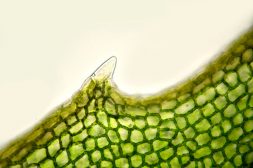Definition
noun
The parenchyma cells in between the sieve tubes of the phloem, and functions primarily for food storage
Supplement
Vascular plants possess two major types of complex permanent tissues. These are the xylem and the phloem. The xylem is responsible for the conduction of water and minerals from the roots upwards to the shoots and leaves. The phloem is the vascular tissue that carries out the function of translocation. Translocation is the process of transporting photosynthate materials from the photosynthetic plant organs throughout the plant. The phloem is comprised of the following major components: (1) sieve elements, (2) companion cells, (3) phloem sclerenchyma , and (4) phloem parenchyma.
The phloem parenchyma is comprised of parenchyma cells. Some of the distinctive features of a parenchyma cell include a thin cell wall, the presence of large vacuole, a prominent nucleus, and the presence of a protoplast. In phloem tissues, these parenchyma cells contain different ergastic substances, e.g. starch, crystals, and tannins. Some of these cells act as storage cells, storing starch as grains. Others are specialized parenchyma cells associated with sieve tubes and are called companion cells.
In secondary phloem, the parenchyma cells are of two types: axial parenchyma cells and ray parenchyma cells.
See also:
Dictionary > Phloem parenchyma





